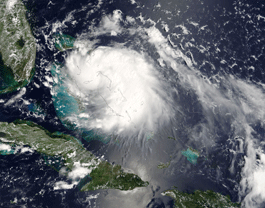After Hurricane Maria devastated Puerto Rico in the fall of 2017, one of the many ensuing scandals was its disablement of several pharmaceutical manufacturing facilities. It was widely reported that intravenous fluids were becoming a scarcity across hospitals in the United States. The American Hospital Association complained to the FDA that the shortage of these IV fluids and other critical products were a growing public health threat.
The American College of Emergency Physicians recently surveyed their professional association and found that nine out of ten emergency physicians reported they did not have access to critical medications, while four out of ten said patients had been negatively affected.
The story exposed the vulnerabilities in the pharmaceutical supply chain and more broadly, the botched recovery efforts in Puerto Rico. However, the prescription drug shortage has existed for years, the hurricane merely tearing the veil off an ongoing crisis.
The American Society of Health-System Pharmacists (ASHP) monitors drug shortages closely. There are over 170 drugs listed on the ASHP’s “Current Drug Shortage” database. The drugs on this list are as varied as atenolol, an antiarrhythmic, to the anxiolytic diazepam, to morphine, a common opioid. The ASHP lists reasons why each drug has become scarce, and in most cases, it is due to manufacturing issues.
Many of the products on the ASHP’s list are sterile injectable drugs, priced competitively, but sometimes expensive to manufacture. Drug producers have struggled to profit from generic drugs, leading to some drugs being discontinued to focus resources on more profitable products. Other competitors cannot just swoop in to take over the job, either. Entry into the market is made difficult by the lengthy approval process to manufacture a new drug.
While shrinking profit margins led some companies to stop manufacturing certain drugs, there’s also been a widespread neglect to invest in older facilities. Pfizer, the nation’s largest producer of generic injectable drugs, has been struggling with dire manufacturing issues.
In February 2017, the FDA issued a warning letter to Pfizer regarding a facility in Kansas, where the manufacturing process was described as “out of control.” Complaints about vials containing cardboard particulates had not been properly investigated either. While Pfizer struggles to produce enough drugs, its competitors have floundered with the increased demand, emptying their own supplies.
Many drugs will not be restocked until next year, but Pfizer has stated that it is continuing to manufacture as it repairs its facilities and several critical drugs will be replenished by the end of 2018. The company has pledged to invest at least $1.3 billion over the next five years to bring its manufacturing facilities back to an acceptable standard.
The public scrutiny has shed light on the troubling gaps in generic drug supplies. The FDA acknowledges that it has not been able to solve the underlying problem, which is that manufacturers are earning tiny margins on complicated products. Congress recently requested an investigation and the FDA has indicated that they are seeking comprehensive solutions.
- American College of Emergency Physicians. Most Emergency Physicians Report Hospitals Lack Critical Medicines; Not “Fully Prepared” for Disasters, Mass Casualty Incidents. ACEP. 2018.
- American Society of Health-System Pharmacists. Drug Shortage List. www.ashp.org/Drug-Shortages/Current-Shortages/Drug-Shortages-List?page=CurrentShortages
- Ramsey, L. We’re running out of commonly used drugs – and hospitals say it’s ‘quickly becoming a crisis.’ Business Insider. 2017.
- Thomas, K. Emergency Rooms Run out of Vital Drugs, and Patients Are Feeling It. The New York Times. 2018.
Kylie Jenkins is a medical student in the Class of 2021. She graduated from Barrett, the Honors College at Arizona State University with an economics degree and briefly worked as an analyst before beginning medical school. She is a notorious speed reader and loves writing, bouts of intense physical activity, and planning her next vacation.


